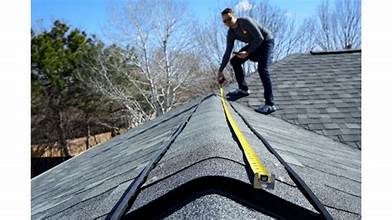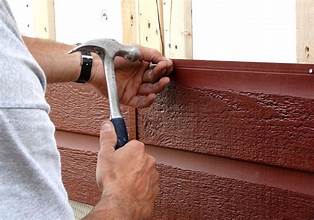Delve into the realm of siding construction where various materials and techniques come together to create durable and visually appealing exteriors. From installation processes to environmental impacts, this topic offers a comprehensive look at the world of siding construction.
Let's start by understanding the different types of siding materials commonly used and how they stack up in terms of durability, cost, and aesthetics.
Types of Siding Materials
Vinyl, wood, fiber cement, and metal are popular choices for siding materials in construction projects due to their varying characteristics and benefits. Each material offers unique advantages and disadvantages that should be considered when selecting the best option for a particular project.
Vinyl Siding
Vinyl siding is a cost-effective option known for its low maintenance requirements and versatility in terms of colors and styles. It is durable and resistant to rot, insects, and moisture. However, vinyl siding may crack or fade over time, and it is not as environmentally friendly as other options.
Wood Siding
Wood siding provides a natural and timeless look that enhances the aesthetic appeal of a building. It is biodegradable and can be easily painted or stained to match specific design preferences. However, wood siding requires regular maintenance, is susceptible to rot and pests, and can be more expensive than other materials.
Fiber Cement Siding
Fiber cement siding is a durable and versatile option that mimics the look of wood without the high maintenance requirements. It is resistant to fire, insects, and rot, making it a long-lasting choice for many homeowners. However, fiber cement siding can be heavier and more difficult to install than other materials.
Metal Siding
Metal siding, such as aluminum or steel, is a strong and lightweight option that offers excellent durability and weather resistance. It is low maintenance and can be recycled, making it an environmentally friendly choice. However, metal siding may dent or scratch easily, and it can be more expensive than vinyl or wood siding options.
Siding Installation Process
Installing siding on a building involves a step-by-step process that requires the right tools and equipment, as well as a focus on proper insulation and weatherproofing to ensure durability and efficiency.To begin the siding installation process, it is crucial to gather the necessary tools and equipment.
This may include a hammer, nails, a level, a measuring tape, a chalk line, a utility knife, a circular saw, a ladder, and safety gear such as gloves and goggles.
Preparing the Surface
Before installing siding, it is essential to prepare the surface by ensuring it is clean, dry, and free of any obstacles. This may involve removing old siding, repairing any damaged areas, and adding a moisture barrier to prevent water infiltration.
- Use a pressure washer or scrub brush to clean the surface thoroughly.
- Inspect for any rot or mold and replace damaged areas.
- Apply a weather-resistant barrier to protect against moisture.
Installing the Siding
Once the surface is ready, the siding can be installed according to the manufacturer's instructions. This typically involves starting at the bottom and working your way up, ensuring each piece is level and securely fastened.
- Begin by installing the starter strip at the bottom of the wall.
- Overlap each piece of siding to allow for expansion and contraction.
- Use a nail gun or hammer to secure the siding in place.
- Cut pieces to fit around windows, doors, and corners as needed.
Insulation and Weatherproofing
Proper insulation and weatherproofing are essential to protect the building from the elements and improve energy efficiency. Insulation can help regulate indoor temperatures, while weatherproofing prevents water damage and air leaks.
Ensure seams are properly sealed and insulated to prevent air leaks and moisture infiltration.
- Install insulation board or house wrap before adding siding.
- Use caulking or foam insulation to seal gaps and joints.
- Add flashing around windows, doors, and other openings to prevent water intrusion.
Maintenance and Repair
Regular maintenance and timely repairs are essential to ensure the longevity and aesthetics of your siding. By taking care of your siding, you can prevent costly damages and maintain the curb appeal of your home.
Tips for Maintaining Different Types of Siding Materials
- Vinyl Siding: Clean with a mixture of water and mild detergent, inspect for cracks or warping, and repaint if necessary.
- Wood Siding: Regularly paint or stain to protect against moisture, insects, and rot, and replace any damaged or rotted boards promptly.
- Fiber Cement Siding: Clean with a mild detergent and water, inspect for cracks or chips, and repaint as needed to maintain its durability.
Common Issues and Repair Solutions
- Moisture Damage: Look for signs of water damage such as mold, rot, or discoloration, and address the source of the moisture before repairing or replacing affected areas.
- Pest Infestation: Inspect for insect damage or nesting, treat the affected areas with appropriate pesticides, and seal any entry points to prevent future infestations.
- Cracks or Gaps: Fill in cracks with caulk or sealant to prevent water infiltration, and replace damaged sections if necessary to maintain the integrity of the siding.
Importance of Regular Inspections and Upkeep
Regular inspections allow you to catch minor issues before they escalate into major problems, saving you time and money in the long run. By investing in the upkeep of your siding, you can protect your home from the elements and preserve its value over time.
Environmental Impact
When it comes to siding materials, considering their environmental impact is crucial in making sustainable choices for your home. Different types of siding can vary in eco-friendliness and energy efficiency, so it's important to weigh these factors when deciding on the best option for your house.
Eco-Friendliness of Siding Materials
- Vinyl Siding: While vinyl siding is durable and low-maintenance, it is not the most eco-friendly option as it is made from PVC, a type of plastic that can be harmful to the environment during production and disposal.
- Wood Siding: Wood siding is a renewable resource and can be sustainably sourced, making it a more environmentally friendly option compared to vinyl. However, it requires regular maintenance and may contribute to deforestation if not sourced responsibly.
- Fiber Cement Siding: Made from a combination of cement, sand, and cellulose fibers, fiber cement siding is a durable and low-maintenance option that is more eco-friendly than vinyl. It is non-toxic and can be recycled.
Energy Efficiency of Siding Construction
Properly installed siding can contribute to the energy efficiency of your home by improving insulation and reducing heat loss. This can help lower your energy bills and reduce your carbon footprint.
Sustainable Siding Options
- Recycled Metal Siding: Siding made from recycled metal, such as aluminum or steel, is a sustainable option that can be recycled again at the end of its life cycle, reducing waste.
- Cork Siding: Cork is a renewable resource that can be harvested without harming the tree, making it a sustainable siding option. It is also a good insulator, helping to improve energy efficiency.
- Bamboo Siding: Bamboo grows quickly and is a renewable resource that can be harvested sustainably. Bamboo siding is durable, lightweight, and biodegradable, making it an eco-friendly choice.
Last Point
In conclusion, siding construction is not just about aesthetics but also about functionality and sustainability. By exploring the various aspects of siding materials, installation processes, maintenance tips, and environmental impacts, we gain a deeper appreciation for the intricate world of siding construction.
Expert Answers
How often should I inspect my siding for damage?
It's recommended to inspect your siding at least once a year to catch any issues early on.
Can I paint vinyl siding?
Yes, you can paint vinyl siding, but make sure to use a high-quality acrylic paint for better adhesion.
What are some eco-friendly siding options?
Fiber cement and reclaimed wood are good eco-friendly siding options due to their sustainability and durability.
Do I need special tools for siding installation?
Yes, you will need tools like a hammer, nails, a level, and a circular saw for proper siding installation.

